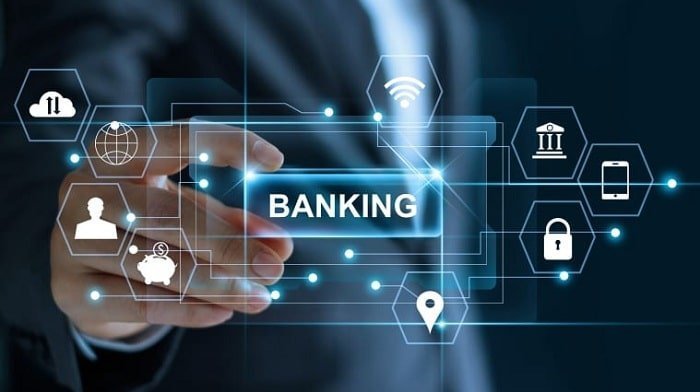One happens to live in a growingly digitalized environment these days, in which citizens go on to have all the information as well as services that are required just one click away. Be it any day or night, one can access the day’s news, engage in a shopping binge, organize travel, or even pay a bill by way of direct debit from their smartphones. And if that was not enough, COVID-19 happened to create a huge push to further the digital transformation. As a matter of fact, even the elderly overcame their apprehension of using technological devices, like smartphones, tablets, as well as computers, so as to carry out tasks that aided their daily lives. Online banking happened to be no exception, with growing numbers of people making financial transactions or even accessing financial services by way of applications, tablets, computers, etc.
For instance, when we talk of Spain, where there happens to be a high level of banking penetration, as per the National Statistics Institute, between the 2019 end and the end of 2020, the digital banking population grew by 10%, which meant that almost 67% of internet users, who accounted for 93% of the total population, regularly made use of electronic banking. This surge happened to be much more prominent in the age bracket of 65–74, with a rise of almost 28%. Underpinning this revolution has been the funding for digitalization made through financial institutions. As per Deloitte’s study called Digital Banking Maturity, the Spanish banking sector is regarded as one of the most digitized across the world, given the wide array of functionalities along with the high quality of the experiences that get to be offered to users.
Apparently, the digitalization process in many countries, teamed with the requirement to decrease costs in the context of low interest rates, which is pushed by the default ratios growth because of the pandemic, has essentially come with reductions in bank office networks along with changes in their roles. The branch must change to stress on offering high-quality professional service to the customer when more in-depth, specialized, or even customized advice is needed, elevated by the proximity offered due to human contact.
It is well to be noted that the threats from big tech such as Google, Amazon, Apple, etc. as well as fintech, which includes Digit, Flywire- financial technology firms happen to need online banking so as to provide not just those basic banking services such as queries, transfers, and direct debits but also value-added offerings that enable customer engagement in the medium term.
The fact is that financial well-being happens to be one of the key areas wherein value can be created for banking service users. Helping customers enhance their finances as well as their abilities so as to control their expenses while at the same time generating sufficient savings in order to cover unforeseen events and also meet their major objectives is necessary to retaining them and also making them profitable as customers. With regards to this, the EU PSD2-Payment Services Directive 2 helps users in affected nations to have all their banking information in a single application—not just from a bank but even if the information happens to come from varied financial institutions, helping them to have overall views of all their financial data. Entities that happen to generate more confidence across their client network will be able to provide them with this integrated as well as aggregated vision of their finances. They will happen to have a 360-degree vision of their clients that is required to offer quality advice and also provide them with the most apt products and services, be they financial or otherwise, thereby resulting in enough revenues.
In today’s times, consumers happen to have faith in their banks, where they share their financial data, competitive advantage over other big tech as well as fintech firms, thereby entering the financial services market. As per a study by Accenture, named 2020 Global Banking Consumer Study, 37% of consumers trust their banks a lot so as to look after their data, whereas less than 10% trust big techs or neobanks with regards to the same. But this trend can transition quickly if a reputable tech company offers this service with a tailor-made and quality user experience.
Digital banking also helps in the full traceability of all things that customers do, so evaluating the data generated happens to be the key to precisely enhancing and personalizing the experiences and also services provided. Banks must use all their customer data so as to get to know them better and also provide more customized experiences having a human touch, enabling them to establish emotional connections. Pinpointing a customer’s emotional state when discussing with the bank through voice or even text analysis technologies is essential to humanizing the experience and also connecting with the customer, but it is without any doubt quite a challenging task.
It is well to be noted that if banks can monetize and also make their knowledge of their customers profitable, like the large technology companies do, their businesses will have an advantage. Google knows what one wants to do, but what one actually wants to do is collect data that is residing in the banking sector. Hence, seeking new revenue sources by way of usage of data is key in an environment that has increasingly narrow intermediation margins and in which the choices of commissions are not sufficient and is unpopular with consumers, who often receive services that look to be free but come with real costs, like the values of the transfers of their data. Banking has to balance guaranteeing the safeguarding and confidentiality of the data offered by the customer while extracting value from that data. Hence, data analytics as well as AI technologies will be pivotal to properly exploiting and making use of this information while at the same time offering varied as well as personalized value to customers at a cost that is quite affordable.
Notably, the fast development when it comes to e-commerce as well as the digital transformation of society make it quite essential for banks to offer their services by way of other companies and third parties like car dealers, real estate agencies, or even online stores so as to meet customers’ financial needs. Meeting these requirements when and where they come up is critical. If the customer happens to be making a large purchase, that is when it makes a lot of sense to provide financing. Furthermore, nonfinancial institutions go on to include financial services within the digital customer experience, like in China, where the WeChat application makes it possible to transact messages, book cabs, order food, send money, or even access a personal loan.
It is worth noting that open banking, banking as a service- BaaS as well as strategic partnerships with other businesses- open collaboration happen to be emerging trends that will be key in the years to come. This happens to be technically supported by way of using APIs that are open to third parties and enable communication between two systems. The data that happens to be shared in these transactions happens to be crucial when it comes to knowing the customer. But offering financial services by way of third parties happens to have risks, so the financial sector has to invest quite heavily when it comes to security so as to avoid susceptibilities as well as fraud.
Interestingly, sustainability also happens to be one more major area that can help generate quite a significant amount of revenue when it comes to the banking sector. In a world that happens to be marked by global warming and also climate change, with efficiency required to making sure of companies’ profitability, enough investments are needed so as to improve production processes by reducing the use of energy resources as much as it can be, thereby reducing environmental footprints along with production costs. The banking sector will be the key when it comes to providing the essential financing for this transformation. The risks of consistently financing fossil-fuel-based activities will become more and more evident, and hence the financing costs will require to be higher for companies that function in these sectors. Such cost differentials will help incentivize shifting these sectors toward more environmentally sustainable options.
Hence, in all likelihood, the banking sector’s future will go on to depend on its capacity to innovate, but this innovation must go beyond creating the next generation of hardware or software; it must have new ways of thinking by way of open-mindedness as well as partnering with other players. The banking sector of the future has to achieve an emotional bond when it comes to its customers that will enable it to be their trusted ally in the financial management of their lives, giving it an endless space of opportunities if it is aware of how to take advantage of them.






















